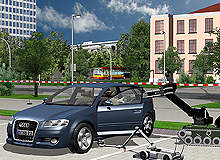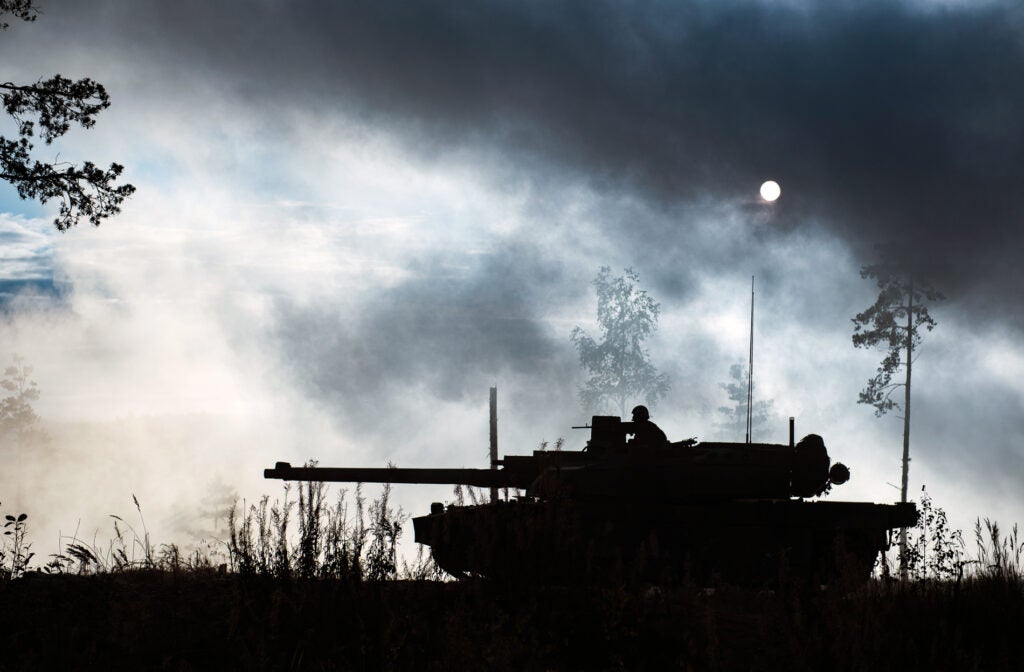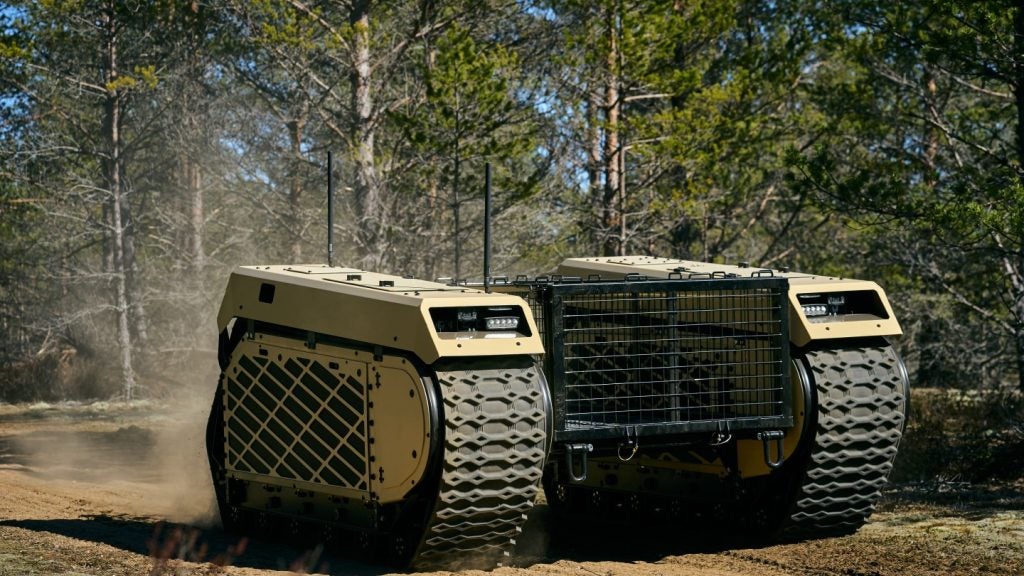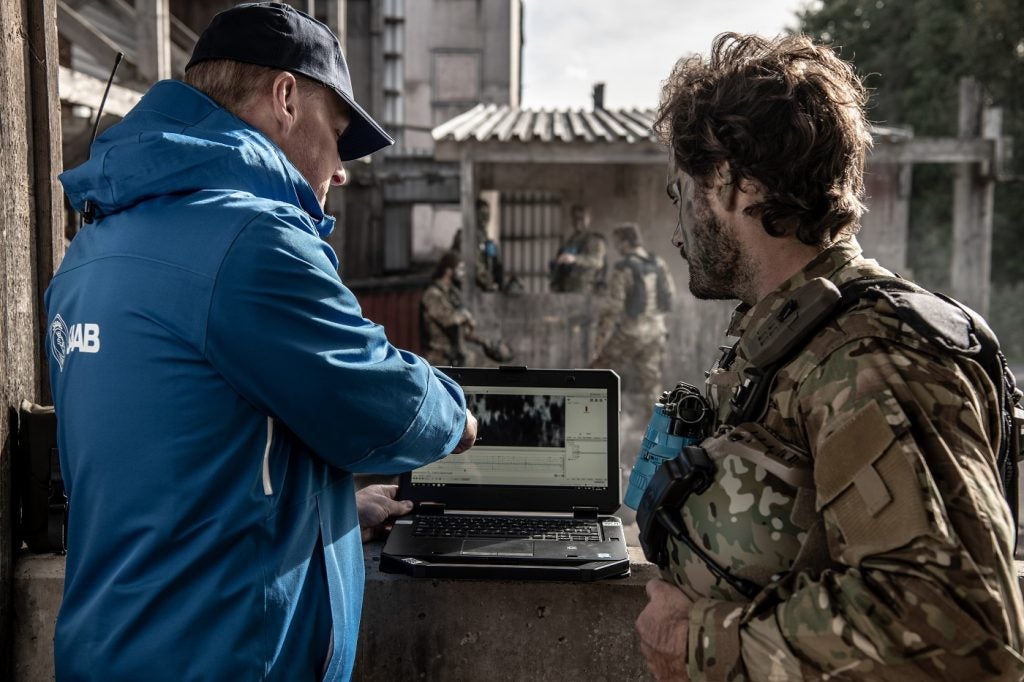
Albrecht Müller: Other than the Bundeswehr, do you know of any other armed forces using equipment such as explosive ordnance disposal (EOD) robot simulators?
Captain Heinz Lichtner: As far as I know we are the only ones currently introducing these simulators for EOD robots. Other nations still use the real machines for their instruction courses or daily training.
AM: What kind of simulators are these new systems?
CHL: With our new equipment we will be able to simulate the handling of the German military’s two current EOD robots: tEODor and Packbot.
The training systems consist of a standard computer or laptop and an original control device from one of the robots. Via the monitor, the user experiences the simulated surroundings with the same view they would have during a real mission via the robot’s camera. Ambient noises are picked up using the robot’s microphone, along with the sound created while driving on different ground types.
With this we can reach a state where virtually the only difference is that between real scenery and that generated by the computer. There are 13 different scenarios available at the moment for instruction and training.
How well do you really know your competitors?
Access the most comprehensive Company Profiles on the market, powered by GlobalData. Save hours of research. Gain competitive edge.

Thank you!
Your download email will arrive shortly
Not ready to buy yet? Download a free sample
We are confident about the unique quality of our Company Profiles. However, we want you to make the most beneficial decision for your business, so we offer a free sample that you can download by submitting the below form
By GlobalDataAM: How will the simulators change the training of your future EOD specialists?
CHL: We expect dramatic changes because in the future our students’ initial training in handling these robots will only involve simulators. At the moment we have to use real machines right from the start.
Currently, our operators get only 40 training hours on the tEODor or Packbot, and that’s in pairs. Therefore, after installing the new simulators, there will be much more training time available. Our final goal is a ratio of 1:1 between training with the real machines and in the simulator.
AM: How will the initial training courses be arranged?
CHL: Today there always has to be an instructor present when two students are operating one robot. In the future, at a stationary simulator system, one instructor can supervise up to six students at the same time.
As with other simulators they will be able to modify the simulation during the lessons, for example activating different kinds of malfunctions or changing the environmental conditions. If no difficult topics, such as how to estimate distances via the robot’s monitor or how to operate its tools are involved, the students will even be able to train alone in the general handling of EOD robots after the initial instruction.
Depending on availability, students will be allowed to use the systems as often as they want. All supervised or unsupervised sessions will be recorded for later analysis of possible errors. The replay can then be shown from different perspectives, something which is impossible when working with the real machines.
We already possess a computer-based programme for autonomous learning, but it only presents the two systems; for example, which button has which function. These simulators will offer us the opportunity to conduct driving training, the handling of the robot’s manipulator arms, and correct orientation in an unfamiliar environment only with the help of a picture on a monitor, in a much more intensive way. In addition, we can let the students also experience difficult situations where a real machine could get damaged.
AM: What do you see the other primary advantages of these new simulators being?
CHL: Theoretically we could not only offer continuous training but erase problems with malfunctions or the normal wear and tear of our EOD robots. If you use a real machine in training, a slight inattention or little misjudgement – for example, in the vertical clearance of an opening – can quickly result in damage worth thousands of Euros. Even more important is that this machine will be out of action for training for some time. These were two significant factors that led to us coming up with the idea for the development of these simulators in the first place.
On real deployments, especially in an operational area like Afghanistan, this is even more important because normally our local EOD squads have only one robot at their disposal. Now they will also be able to train more often without having to worry about damaging this highly valuable equipment. Even if one training programme costs as much as eight real robots, it pays for itself over time. This is because you don’t have to maintain the real vehicles, which in the case of EOD robots can be very expensive. It also reduces the strain on our existing robots.
AM: How many EOD robot simulators is the Bundeswehr planning to purchase?
CHL: In total we will receive two stationary systems, with six training positions each, for our centre in Stetten, and 14 mobile systems. These only have a single training station and are going to be used with our EOD squads throughout Germany and in our operational areas.
The first system was delivered by the end of April to begin the trial phase. Our goal is to have all systems fully operational by the middle of 2011.
AM: How did the development of these systems, which have been especially designed for the Bundeswehr, take place?
CHL: The German military already uses simulation programmes for other vehicles, such as our tanks.
Our Centre for Explosive Ordnance Disposal together with the German company Szenaris, which designed the simulator programmes for the M3 Amphibious Rig, implemented the idea of using this technology for our robots. Due to their knowledge of operating these devices in training and also on operations, our experts helped design the simulation of the complicated physical characteristics of both robots as realistically as possible. This was also one of the most difficult parts of the whole development process.
AM: You were part of this development team and therefore have already had a chance to try out the new systems. How realistic does working on these simulators feel to an experienced EOD specialist?
CHL: It’s almost like working with a real machine. The basic difference is that you see a computer-generated picture instead of a live picture. It is quite astonishing. Even the behaviour of objects barely differs from reality.
A great advantage of these simulators is, of course, that an EOD specialist working on a real IED also sees only a picture via his robot’s camera, and he also has only a limited physical involvement. All assessments, basically, have to be made with the help of the monitor picture. Even heavy lifting is only a visual experience.
However, despite the picture there is, of course, one other major difference: while working with a real robot, you feel much more psychological pressure. These vehicles weigh up to 360kg, and if, for instance, you let them climb stairs or steep areas, even a tiny false touch on the controls can result in a huge amount of damage.
AM: What are the greatest difficulties a future EOD specialist has to be prepared for when using a robot for his work?
CHL: To select the correct operating device in the correct way. For example, if the robot is near an object that you only want to have a close look at, you must be very careful not to touch a wrong button and unintentionally move the object. This has become very important, especially in our operational areas, because touch-sensitive IEDs already exist.
Another mistake with potentially bad consequences arises if you do not correctly assess the ground you’re driving on in time. The robot can get stuck or – even worse – tip over. Then the EOD expert has to go forward, thus losing the advantages of using a remotely controlled vehicle from a safe distance.
Even if you will never be able to prevent such incidents completely, additional training will at least reduce the chances of them happening.






